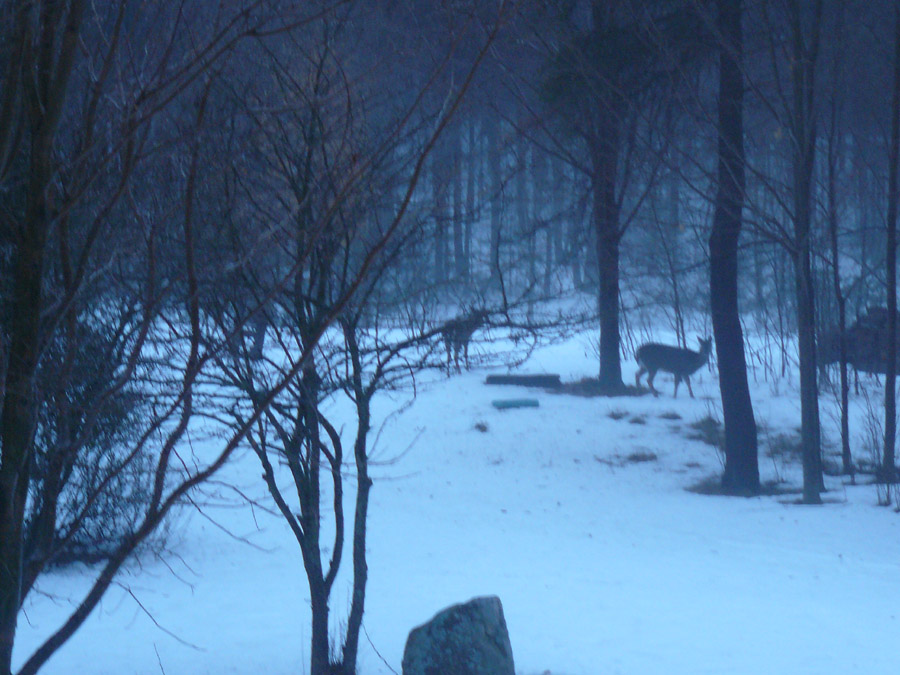 Location Taken: Arcadia, Michigan
Location Taken: Arcadia, Michigan
Time Taken: December 2008
Now for a nice sunny photo – no wait, make that yet another snowy photo. This one’s at night, too! Well, dusk anyway.
And it has deer!
My maternal grandparents live in a more rural part of Michigan. Their house is abutted by little but trees and a highway, and half the people in the valley are related to us. It’s nice. This does mean a high amount of *gasp* nature. Including deer, which while overly common in the US, are still a rare sight.
There’s something special about seeing a creature that large emerge from the woods. Admittedly, as large mammals go, the white tailed deer is nowhere near large. It’s just that we Americans have tamed these woods thoroughly, chasing out almost all the predators (which is why we have too many deer), and created death traps for them known as roads. Although, I don’t think there were too many large animals here anyway, even before anyone who called themselves “Americans” got here. The native groups were quite well settled in the east, and did their own taming of the land. And their ancestors had killed off a significant portion of the megafauna in this area millenia ago. The Clovis people seemed to have been rather efficient at it, since we keep finding their spear points associated with piles of the bones of mammoth, horse, camel and other extinct animals. Mind you, I’m talking about the North American horse lines. Horses actually evolved on this continent, and crossed the Bering strait to colonize Asia and the rest of those connected continents. Same with camels. Which turned out to be a very good thing, since it was only a few millenia later that they were extinct in North America, victims of climate change and overhunting and possibly other things (it’s unclear and controversial) not long after the ice age ended. So you could say the Spanish letting some of their horses go free back in the 1400’s, which formed the wild horse lines you find today, are actually a really old reintroduction program, like you find with wolves and bison and other such animals today.
I actually wish more people realized how important reintroducing the predators is. If you look at the evidence from the wolf reintroduction in Yellowstone, it’s brought the ecosystem back to a much healthier and robust level than it had been without the wolves. When there are no predators, the larger herbivores get highly overpopulated, since the conditions are right for them. And since those herbivores, the elks and deer and the like, do just fine in the spotty forests and fields landscape we humans create, we get them all around us, which leads to the 1.5 million times a year a deer and a car have an unfortunate (and expensive) meeting. Honestly, I’d much rather have wolves at my door than deer in the roads. But then, I am biased. I’m rather fond of wolves, you know.
